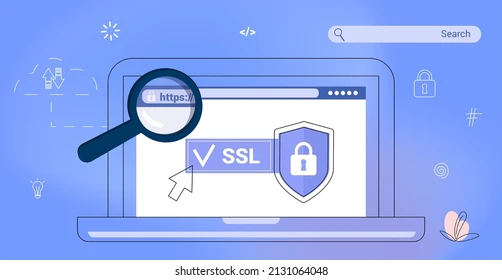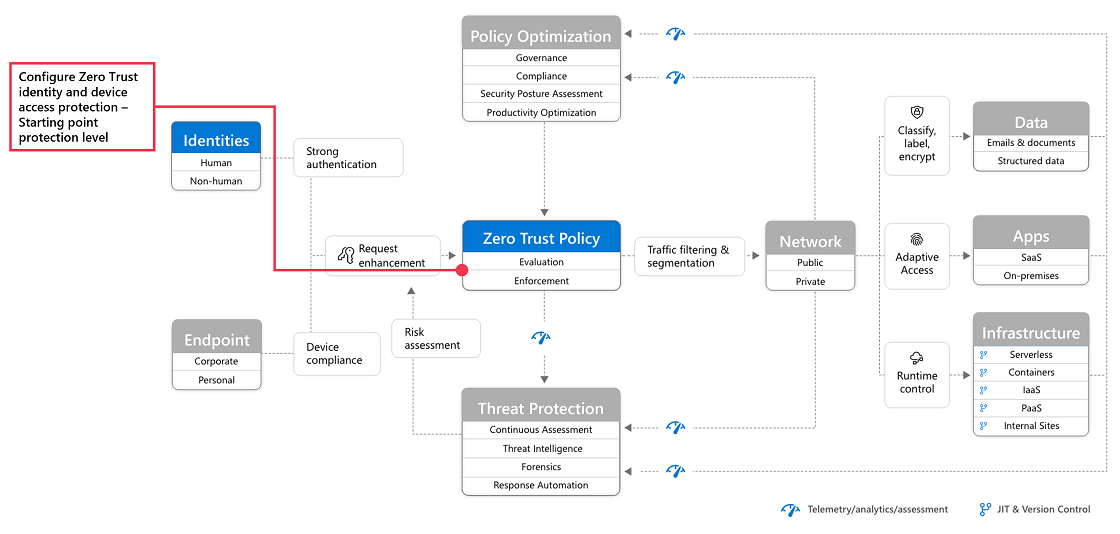Introduction: Why Continuous SSL Monitoring is Key to Keeping Your Website Safe
With cybersecurity threats growing more sophisticated, it’s crucial for website owners to ensure that their online platforms are secure and protected. SSL certificates, which encrypt data between users and websites, are an essential tool in maintaining this security. However, simply installing an SSL certificate is not enough—continuous SSL monitoring is vital to ensure that your website remains secure and free from vulnerabilities.
In today’s digital landscape, SSL certificates can expire, be misconfigured, or become vulnerable to new cyber threats. Regularly monitoring your SSL certificate’s status helps address potential issues before they escalate into significant security breaches or lead to a loss of trust among your users.
This article explores the importance of continuous SSL monitoring, the risks associated with not monitoring SSL certificates, and the tools and strategies you can implement to keep your website secure.
Why SSL Monitoring is a Necessity for Modern Websites
The internet has become a dangerous place for businesses and users alike, with cyberattacks on the rise. SSL certificates help protect sensitive information by encrypting it during transmission. However, SSL certificates require maintenance and vigilance. Without continuous monitoring, your website may face security risks, warning messages, and performance issues.
1. Preventing Expiration-Related Security Risks
SSL certificates have a defined expiration date, typically lasting one to two years. If your SSL certificate expires, browsers will flag your site as insecure, leading to warning messages that can drive away visitors. Continuous SSL monitoring ensures that you are alerted well before your certificate expires, allowing you to renew it on time and avoid these issues.
2. Avoiding “Not Secure” Browser Warnings
When an SSL certificate is not properly maintained, users may see warnings like “Your connection is not private” when trying to access your site. These warnings can severely damage your credibility and drive users away from your site. SSL monitoring helps you prevent such warnings by checking that your certificate is valid and correctly installed.
3. Protecting Against Evolving Cyber Threats
Cybercriminals are always looking for new vulnerabilities to exploit. SSL monitoring helps identify potential weaknesses in SSL/TLS configurations or certificates that may leave your site open to attacks. By regularly scanning for vulnerabilities, SSL monitoring tools keep your website secure from emerging threats like man-in-the-middle attacks.
4. Ensuring Compliance with Industry Regulations
Many industries, such as finance, healthcare, and e-commerce, have strict data protection regulations that require the use of SSL certificates. Continuous SSL monitoring helps ensure compliance with these regulations by keeping certificates up-to-date and generating reports to demonstrate compliance during audits.
The Benefits of Continuous SSL Monitoring for Website Security
Beyond simply avoiding security warnings, continuous SSL monitoring provides several benefits that help enhance your website’s overall performance, user experience, and trustworthiness.
1. Maintaining Trust with Visitors
A secure website builds trust with visitors. An SSL certificate ensures that any sensitive information they provide, such as personal details or payment information, is protected. SSL monitoring ensures that this protection is always in place, helping to preserve the trust and confidence of your users.
2. Improving SEO Rankings
Search engines, especially Google, prioritize websites that are secure and encrypted. Sites without SSL certificates, or those with expired certificates, may see their rankings drop. Regular monitoring of your SSL certificates ensures that you maintain the security needed to rank well in search engine results.
3. Reducing the Risk of Downtime
SSL certificate-related issues, such as misconfigurations or expiration, can lead to website downtime or restricted access for users. Downtime affects user experience and may lead to lost business. SSL monitoring helps prevent these problems by ensuring your certificate is always functional and correctly configured.
4. Early Detection of SSL-Related Issues
Continuous SSL monitoring provides early warnings of any certificate-related issues, allowing you to fix problems before they affect your site’s security or user experience. This proactive approach minimizes disruptions and ensures smooth, secure operation for your website at all times.
5. Providing Detailed Security Insights
SSL monitoring tools offer detailed insights into the health and performance of your SSL certificates, including potential vulnerabilities, compliance with security standards, and overall certificate validity. These insights help you stay informed and act swiftly to mitigate security risks.
Common SSL Monitoring Challenges and How to Overcome Them
While the benefits of SSL monitoring are clear, there are a few common challenges that businesses may encounter when implementing continuous SSL monitoring. Understanding these challenges and how to overcome them will help ensure a successful SSL monitoring strategy.
1. Certificate Expiration Management
With multiple certificates to manage, it can be easy to lose track of expiration dates, leading to lapsed security. SSL monitoring tools provide automated reminders and alerts to help you stay on top of certificate renewals.
2. Ensuring Proper Configuration
SSL certificates need to be properly configured to provide full protection. Incorrect settings, such as missing intermediate certificates, can weaken your security. SSL monitoring tools regularly check configuration settings to ensure they meet industry standards and are optimized for security.
3. Handling Certificate Transparency Logs
Certificate Transparency (CT) logs allow for public tracking of issued SSL certificates, helping to detect fraudulent certificates. However, managing these logs manually can be difficult. SSL monitoring tools automate this process, scanning logs for any unauthorized or suspicious activity related to your certificates.
4. Managing Certificates Across Multiple Domains
Organizations with multiple websites or subdomains often face difficulties in managing SSL certificates across various properties. SSL monitoring tools simplify this process by providing centralized management, making it easier to monitor the status of certificates across multiple domains.
Best Practices for Effective SSL Monitoring
To maximize the benefits of SSL monitoring, it’s important to follow certain best practices that will help you protect your website and provide a seamless user experience.
1. Set Up Automated Alerts
Ensure that your SSL monitoring tools are configured to send automated alerts before certificates expire, when vulnerabilities are detected, or when there are any misconfigurations. These alerts allow you to respond quickly to potential issues and avoid disruptions.
2. Monitor All Certificate Types
It’s important to monitor all types of SSL certificates, including Extended Validation (EV), Domain Validated (DV), and Wildcard certificates. Each type plays a crucial role in your overall website security, and monitoring them ensures there are no gaps in your protection.
3. Regularly Update SSL Protocols
SSL/TLS protocols are regularly updated to address new security vulnerabilities. Stay up-to-date with these changes and ensure that your SSL monitoring tools check for outdated protocols. Keeping your protocols current is key to protecting your site from emerging threats.
4. Use Centralized SSL Management
For organizations managing multiple websites, centralized SSL certificate management tools can help you stay organized and efficient. These tools provide a single platform to monitor and manage all your certificates, simplifying the process and reducing the risk of human error.
Top Tools for Continuous SSL Monitoring
To implement effective SSL monitoring, it’s essential to choose the right tools. Several reliable SSL monitoring platforms are available, each offering unique features that help you keep your SSL certificates in top condition.
1. SSL Labs
SSL Labs, by Qualys, is a widely-used tool for testing the security of your SSL certificates. It provides detailed reports on certificate strength, configuration issues, and any vulnerabilities, making it a great resource for thorough analysis.
2. UpGuard
UpGuard offers comprehensive SSL monitoring alongside broader cybersecurity monitoring tools. It provides real-time alerts for any certificate issues and ensures that your website’s SSL configuration meets industry standards.
3. StatusCake
StatusCake is a popular SSL monitoring tool that checks the validity and performance of your SSL certificates. It offers real-time notifications for certificate expirations and misconfigurations, helping you maintain optimal SSL performance.
4. RapidSSL Monitoring
RapidSSL Monitoring provides detailed reports on SSL certificates and sends proactive alerts to ensure your website’s security. It also offers integration with Certificate Transparency logs to detect unauthorized certificates.
Conclusion: Safeguard Your Website with Continuous SSL Monitoring
Continuous SSL monitoring is essential for any website owner who values security, user trust, and regulatory compliance. By proactively managing SSL certificates, addressing vulnerabilities, and ensuring proper configuration, you can prevent security breaches, avoid browser warnings, and maintain a safe user experience.
Invest in a reliable SSL monitoring tool today to safeguard your website and protect your users. Regular monitoring will ensure that your SSL certificates remain valid, secure, and effective, providing the encryption and trust your site needs to thrive.
Call to Action:
Take action now by implementing continuous SSL monitoring on your website. Choose a trusted monitoring tool to stay ahead of potential security risks and ensure your online platform remains secure and reliable.















